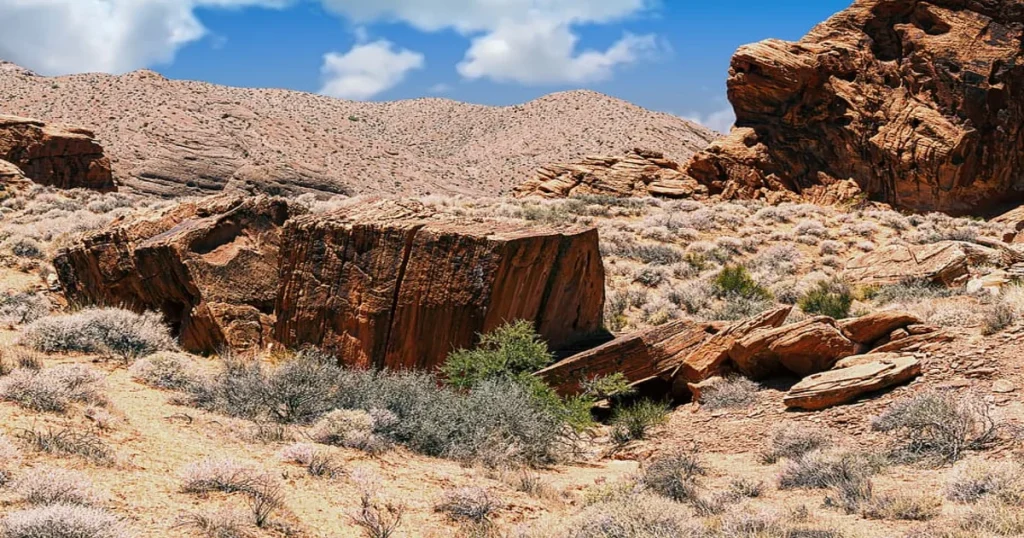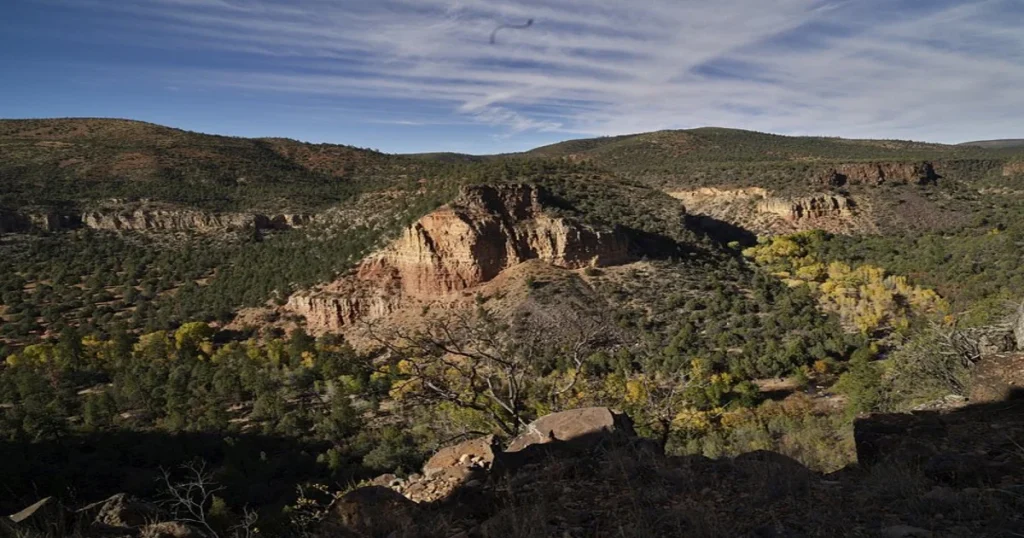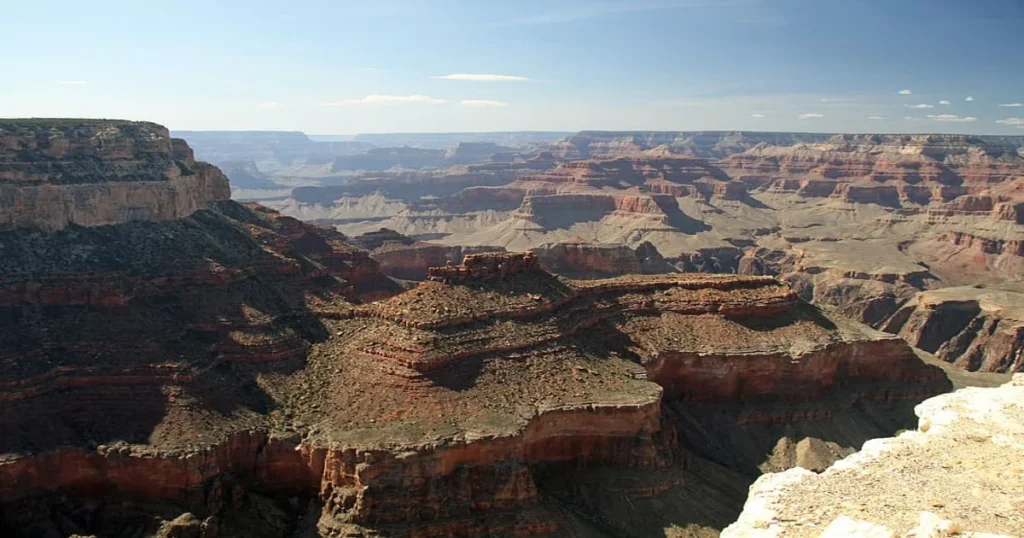Nestled amidst the diverse and picturesque landscapes of Arizona lies Prescott, a city rich in geological wonders. The unique geological features of Prescott’s natural landmarks make it a must-visit for nature enthusiasts, geologists, and anyone with a keen interest in the Earth’s history.
These features not only provide a stunning visual spectacle but also serve as a testament to the Earth’s ever-evolving nature.

Prescott’s terrain offers a rare fusion of nature and history. Arizona’s geological history is well represented here, with landmarks telling stories dating back millions of years. The city’s geology also plays an intrinsic role in its tourism, drawing visitors from all over to witness its captivating natural formations.
The Granite Dells: A Timeless Beauty
One of Prescott’s most iconic landmarks is the Granite Dells, a collection of ancient, rounded granite boulders that appear to rise almost magically from the Earth. Their unique structure and aesthetic beauty make them a beloved attraction in the area.
The origin and formation of these structures is a tale of erosion and time. Over eons, wind and water have sculpted these granite formations, giving them their characteristic rounded appearance. This natural process, combined with the inherent durability of granite, ensures their continued existence.
Weathering plays a significant role in the Dells’ current appearance. While granite is one of the most resilient rocks, the consistent wear of natural elements over time has resulted in fascinating patterns and textures. These unique formations provide ample photo opportunities and intrigue for rock climbers and hikers.
What’s more, the area surrounding the Granite Dells isn’t just about rocks; it’s a hub for recreational activities. Whether it’s kayaking in the lakes or hiking the myriad trails, there’s something for everyone.
Watson and Willow Lakes: Nature’s Reflection
Watson and Willow Lakes are two of the region’s crown jewels, offering scenic beauty and an array of outdoor activities. These lakes not only serve as recreational spots but also offer intriguing insights into the area’s geological past.
The basins that house Watson and Willow Lakes have a deep geological significance. They were formed by the natural erosion of the surrounding land, leading to the collection of rainwater over time. This process has created the unique shorelines and basins that we see today.
The shorelines of these lakes showcase unique features, thanks to the underlying bedrock. The interaction between the water and the bedrock has led to the creation of small caves, coves, and other fascinating formations that are a treat for explorers.
Thumb Butte: Rising Above
Thumb Butte, with its distinct shape and towering presence, stands as a sentinel over Prescott. It’s not just an awe-inspiring sight; it’s a window into the region’s volcanic past.
The volcanic history of Thumb Butte is both complex and captivating. Millions of years ago, the area was a hotbed of volcanic activity, and the Butte stands as a remnant of that fiery past. Its formation was a result of magma cooling and solidifying before it could reach the surface.
Erosion has also played its part in giving Thumb Butte its unique appearance. Over time, the softer surrounding rock has worn away, leaving the harder volcanic rock of the Butte standing tall. This natural process has further accentuated its thumb-like appearance, making it a distinctive landmark.
Culturally and spiritually, Thumb Butte holds significance for the indigenous peoples of the region. For many, it serves as a symbol of strength, resilience, and continuity.
The Bradshaw Mountains: Nature’s Elevations
Stretching to the south of Prescott, the Bradshaw Mountains are a testament to the power and persistence of tectonic forces. Their elevated terrains and varied landscapes make them a favorite among hikers and nature lovers.
Tectonic uplift over millions of years led to the formation of the Bradshaws. The constant movement of the Earth’s crust caused these mountains to rise, showcasing the dynamic nature of our planet’s geology. Research indicates that this uplift was accompanied by volcanic activity, adding further depth to the mountains’ geological story.

The Bradshaws aren’t just about stunning views. They’re also home to a range of unique minerals, some of which played a crucial role during the mining boom of the 19th century. Gold, silver, and copper were extensively mined here, leading to the establishment of several towns in the region.
Erosion, as always, continues to play its part. The mountains today are a result of the continuous interplay between tectonic forces and natural weathering, making them a living, evolving entity.
Lynx Creek: Stream of Gold
Lynx Creek, meandering through the Prescott National Forest, isn’t just another pretty waterway. Its banks hold tales of fortune seekers and dreams of gold.
The geological composition of the region surrounding Lynx Creek created an environment conducive to gold deposits. Over the years, erosion led to the release of these deposits, making the creek a hotspot for gold panning.
During the gold rush era, Lynx Creek became a focal point for miners and settlers looking to strike it rich. Historical records suggest that the creek was one of the most prolific gold producers in Arizona. Even today, amateur prospectors can be seen with their pans, hoping to catch a glint of the precious metal.
Montezuma’s Well: Nature’s Oasis
Nestled in the high desert landscape near Prescott is Montezuma’s Well, a unique limestone sinkhole filled with water. It’s more than just a picturesque location; it’s a geological marvel and an ecological haven.
The well owes its existence to the dissolution of underground limestone by carbonic acid in the water. Over time, this process led to the formation of this sinkhole. What makes Montezuma’s Well truly special is its continuous supply of warm water. Fed by a natural spring, the well has an output of over a million gallons of water per day!
This consistent water supply has led to the development of unique ecosystems within the well. Rare aquatic species, some of which are found nowhere else on Earth, thrive in its waters, making it an essential site for ecological studies.

The Verde River Greenway: A Riparian Wonder
The Verde River Greenway, with its lush landscapes and rich biodiversity, stands in stark contrast to the arid surroundings of Prescott. This riparian corridor serves as a lifeline for countless species and showcases the region’s unique geological features.
The geology of the region has played a pivotal role in supporting such diverse habitats along the greenway. The presence of water, combined with the varied mineral composition of the soil, has led to the growth of dense forests, wetlands, and grasslands. The Verde River’s path has been influenced by the underlying bedrock and the natural processes of erosion and sediment deposition.
Furthermore, the Verde River Greenway plays a critical role in regional hydrology. It acts as a natural reservoir, ensuring a consistent water supply for both natural ecosystems and human communities downstream. The river’s waters, rich in minerals, support a range of plant and animal life, some of which are endemic to this region.
The Sedona-Verde Valley: Red Rock Wonders
The iconic red rocks of the Sedona-Verde Valley are a sight to behold. These formations, with their deep hues and majestic structures, are a draw for tourists, artists, and geologists alike.
The distinctive red coloration of these rocks can be traced back to their mineral composition. Iron oxide, or rust, gives these formations their deep red hue. Over millions of years, sedimentary layers rich in iron were exposed to the elements, leading to the oxidation process.
Weathering, once again, plays a significant role in the unique rock formations seen in the valley. The softer layers erode more quickly, leading to stunning structures like arches, spires, and buttes. The Chapel of the Holy Cross, built into the red rocks, offers a panoramic view of these formations and serves as a testament to the region’s geological and spiritual significance.
Mingus Mountain: Above the Desert Floor
Dominating the horizon to the west of Prescott, Mingus Mountain offers a diverse range of landscapes, from dense forests to open meadows. Its elevation provides a unique vantage point, offering panoramic views of the surrounding valleys.
Geologically, Mingus Mountain showcases a fascinating transition from its base to its summit. The lower elevations feature sedimentary rocks and remnants of ancient seas and lakes. As one ascends, igneous and metamorphic rocks begin to dominate, providing insights into the region’s volcanic past and tectonic activities.
The mountain’s elevation plays a significant role in its local climate patterns. The higher altitudes receive more rainfall, leading to cooler temperatures. This microclimate has resulted in a rich biodiversity, making it a hotspot for ecologists and nature enthusiasts.
The Peavine Trail: A Journey Through Time
Prescott’s Peavine Trail, a part of the Rails-to-Trails project, offers a unique blend of natural beauty and historical significance. As visitors traverse this path, they’re treated to views of both the region’s geological wonders and remnants of its railroad past.
Geological markers along the trail provide insights into the region’s varied terrains. From ancient sedimentary formations to more recent volcanic outcrops, the Peavine Trail is a veritable outdoor museum for those keen on understanding Earth’s history.

The trail also showcases the influence of the historical railroad. Old tracks, tunnels, and bridges dot the path, reminding visitors of a time when steam engines chugged along, carrying goods and passengers. The Rails-to-Trails Conservancy initiative has ensured that this historical legacy is preserved while providing recreational opportunities for the community.
Frequently Asked Questions:
In this section, we will be delving into some of the most common inquiries and curiosities that surround our topic.
Why are the Granite Dells so uniquely shaped?
The Granite Dells owe their distinctive shape to millions of years of erosion. Wind and water have played a crucial role in sculpting their rounded appearance.
Is there still gold in Lynx Creek?
While the major gold veins have been mined out, amateur prospectors still find flakes and small nuggets in Lynx Creek. It remains a popular spot for recreational gold panning.
What gives the Sedona-Verde Valley its red hue?
The red coloration is due to the presence of iron oxide, or rust, in the rock formations. Over time, oxidation of the iron-rich sediments gave the rocks their iconic hue.
How are the local communities involved in preservation efforts?
Local communities play a pivotal role in conservation. From volunteering in clean-up drives to participating in educational programs, the residents of Prescott and surrounding areas are deeply involved in preserving their natural heritage.
Why is Thumb Butte considered a significant landmark in Prescott?
Thumb Butte’s distinctive shape, combined with its volcanic history and cultural significance for indigenous peoples, makes it a standout landmark in the Prescott region.
Conclusion: Unique geological features of Prescott’s natural landmarks
Prescott’s unique geological landmarks provide a captivating blend of nature, history, and culture. The intricate dance of tectonic forces, erosion, and time has shaped this landscape, offering insights into our planet’s dynamic past.
For the residents and visitors of Prescott, these landmarks are not just static entities but living testimonials to the Earth’s ever-evolving story. From the rounded boulders of the Granite Dells to the riparian wonders of the Verde River Greenway, Prescott stands as a testament to the wonders of nature and the importance of preservation.



Leave a Comment
You must be logged in to post a comment.